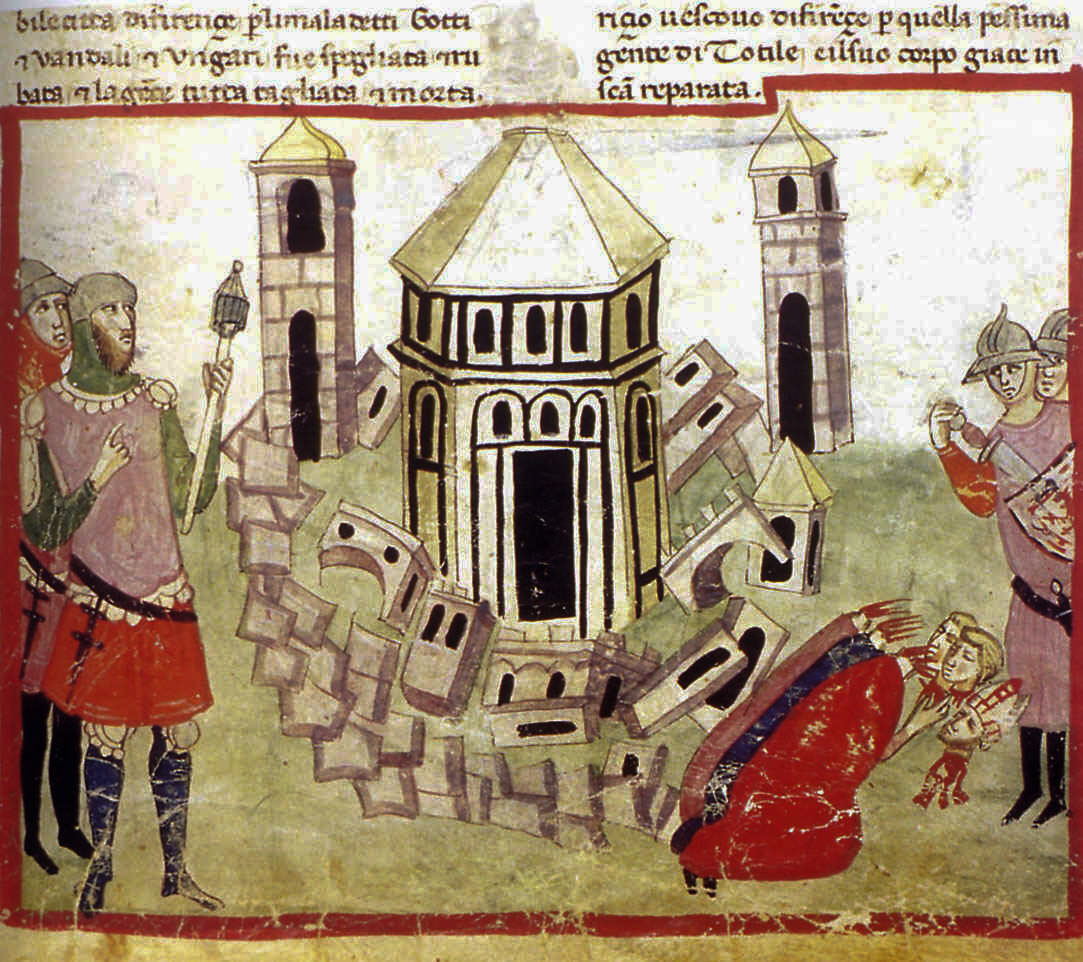To Pedro, the brain is different from the mind. Mary's idea makes sense to him. The brain might be the foundation of the mind. But how does that actually work?
Pedro: Why do you say the brain is the basis of the mind?
Mary: Well, when we think or feel something, the brain cells become active in certain ways. There seems to be a direct connection between what we experience and what the brain does. That's why the brain might be the basis. Long ago, people thought feelings came from the heart and used the word heart to mean the mind. But the heart's beating and blood-pumping are too simple to explain complex thoughts. Mind is a better word. It comes from the Middle English word mynde, which means memory. Memory points more clearly to the brain, which has a huge number of closely connected nerve cells that can store a lot of memories.
P: I like the idea that mental states come from brain activity. Scientists know quite a bit about the brain. They've even developed drugs to treat mental illnesses based on that knowledge. It's impressive.
M: Yes, and that's one reason why we need to understand the mind - to treat its illnesses. Mental conditions like anxiety, depression, dementia, and schizophrenia cause real suffering. They are just as painful as physical problems like toothaches or ulcers.

Worried Matildi's Turned Four.. by Filipa Machado
P: I'd like to know the root causes of anxiety and depression. If we could figure that out, maybe we could cure them. Wouldn't that be great?
M: It certainly would. But the problem is, we don't know much about the mind scientifically. We know a lot about the brain because it's a physical object that we can examine and measure. Scientists have studied it and learned about its structure and chemical activity. But that's still not enough to explain how the mind - like memory, imagination, thinking, or anxiety - really works.
Poetry, novels, and art depict the mind's feelings and thoughts, but those are creative expressions and can change easily. If you try to pull facts from them, you might find something meaningful in one way, but it's not always reliable. Besides art, there's also metaphysics and philosophy that talk about the mind and consciousness. But those are very hard to understand in a logical or scientific way.
P: I've read some metaphysical books claiming the physical world is created by the mind or consciousness, and that only the spiritual or mental world is real while the physical world is not. That seems backward, like saying bread makes flour instead of flour making bread. Also, metaphysical explanations of the mind - like memory or imagination - often sound dogmatic and can't be independently verified.
M: Buddhism has metaphysical aspects as well. I have two examples of that showing how hard it is to understand them. One is from the Surangama Sutra and the other the Vajra Diamond Sutra.
In the Surangama Sutra, the Buddha asks his disciple Ananda where the mind that sees things is located. Ananda gives several answers - inside the body, outside the body, in the eyeballs - but the Buddha refutes all of them. After a long discussion, Ananda finally admits that the mind isn't located anywhere in this physical world. But then the Buddha refutes even that, saying the mind must exist because it recognizes the forms our senses detect. And if it exists, he says, how can it be without a location? "Therefore, one should know that this without-a-location thing called the discerning mind is meaningless."
So the Buddha's answers are self-contradictory: the mind is not located in this world, yet it must be located in this world.
In the Vajra Diamond Sutra, the disciple Subhuti asks the Buddha: if someone vows to follow the bodhisattva path to attain perfect enlightenment, then what should they rely on, and how should they subdue their mind? 發阿耨多羅三藐三菩提心,應云何住?云何降伏其心?
The Buddha gives a long and puzzling answer. Some of his statements are:
"You should subdue the mind thus... I have brought countless beings to nirvana (enlightenment). Actually, no beings have reached nirvana." 應如是降伏其心... 我皆令入無餘涅槃而滅度之. 如是滅度無量無數無邊眾生, 實無眾生得滅度者.
"All forms (appearances) are illusory and false. If you see that all forms are not the real forms, then you see the Tathagata (Buddha)." 凡所有相 皆是虛妄 若見諸相非相 則見如來
"The bodhisattva on this dharma (to subdue the mind) should abide in nothing, but do charity work." 菩薩於法 應無所住 行於布施
"That is, to practice charity without attachment to sight, sound, smell, taste, touch, or dharmas. Subhuti, bodhisattvas should practice charity this way, without attachment to any forms." 所謂不住色布施 不住聲香味觸法布施 須菩提 菩薩應如是布施 不住於相
"... these sentient beings are then free from the forms of a self, a person, a sentient being, or a life span. They are also free from the forms of dharmas or non-dharmas." 是諸眾生 無復我相 人
相 眾生相 壽者相 無法相 亦無非法相
"The mind should abide in nothing, and be born from that." 應無所住 而生其心.
The meaning of his answer is hard to follow. Some Buddhist teachers explain that it is about the practice of detachment - detachment from perceiving forms as real, from holding onto the idea of a self, from seeking merit for good deeds, and from the concept of enlightenment itself.
I can see the practice of detachment is good for subduing the mind. However, if detachment is the main idea, then why the strange and seemingly unrelated explanation? Why not just spelling it out directly? Also, that answer begs a deeper question, which is how does one actually detach the self from the act of charity? Honestly that's not possible. The knowledge of charity and the deed of doing it come from the mind or self. If one is detached from that self, one will loose abilities to do anything.
So maybe the text is saying don't think of yourself as the one doing the charity; and don't seek rewards for the work done. It is like pretending you have done nothing but actually have, and gaining merit and virtue by it. And the sutra states that this kind of pretension or detachment brings boundless blessings.
Anyway, besides the obscure meaning of these texts, there's also the issue of translation. Take the Sanskrit word "samjna" for example. The famous translator Kumarajiva (鳩摩羅什) translates the word as "form" or "appearance" (相). According to him, the sutra speaks of four forms of self:
atman-samjna: 我相 self-form
pudgala-samjna: 人相 person-form
sattva-samjna: 眾生相 being-form
jiva-samjna: 壽者相 life-form
The translation for jiva-samjna leads to confusion, as 壽者相 in Chinese means "the appearance of someone who lives a long life." But the Sanskrit jiva refers to a living being or the eternal self, not somebody who lives to an old age. The Chinese readers will easily wonder why the text mentions an old man along with the other 3 forms.
The scholar-monk Xuanzang (玄奘), on the other hand, translates samjna as imagination or cognition (想). This changes the terms to:
atman-samjna: 我想 idea of self
pudgala-samjna: 人想 idea of a person
sattva-samjna: 眾生想 idea of sentient beings
jiva-samjna: 壽者想 idea of life or living
In this version, the meaning shifts from "forms" to "notions" of the self. The phrase 不住於相 ("do not dwell in forms") becomes 不住於想 ("do not dwell in thoughts"). And 不住相布施 becomes 不住想布施 - doing charity work without clinging to thoughts of doing charity. This makes the concept of detachment more directly expressed.

A painting done without perspective.
However, it is Kumarajiva's translation that is most widely printed and read, not Xuanzang's. As a result, most Chinese readers are unaware of the alternative wording of the Buddha's teaching.
Many Chinese Buddhists believe Kumarajiva's version holds deep truths, even if it's difficult to understand. I believe a good teaching should be clear, so that anyone studying it can grasp its meaning. Confusing language should be removed or explained. Still, I understand that no writer or translator can express any idea in a way that's completely clear to everyone, because each person's understanding is shaped by their own experiences.
Anyway, the Buddha knows something about the mind, but he hasn't expressed his knowledge in ways that are easy for us to understand. Many sutras show that his disciples are often bewildered by his teachings. He uses words like skandhas, dhyana, sunyata, and enlightenment to describe aspects of the invisible mind. These terms remain mysterious, even when explained.
There's a Zen koan - a kind of meditative question - about this. A novice wonders what the real self is, so he asks his master. The master tells him to meditate on this question: 'Who is the real I before my parents were born?" This koan is said to lead one to enlightenment if one truly gets it.
P: That's a lot of buddhism. I think different novices and different teachers will interpret that koan in different ways. I also think that some people practice Zen not to gain enlightenment or truth, but to find a sense of peace or belonging. Buddhist sanghas offer refuge to those who need spiritual support, and I deeply respect that. But I still want to understand how the mind works scientifically, in some definite and verifiable ways. And I hope the knowledge can be as clear as 1 + 1 = 2.
M: I've just had an idea about how to better express the "location of the mind" problem. The mind isn't physical, so it doesn't have a physical location. It exists purely in the mental realm to enable us to think and feel. That should make the discussion in the Surangama Sutra easier to grasp.
P: That might help those who have a modern education and know the difference between mental phenomena and physical forms. But they may not accept this viewpoint either.
M: Right. Now let's return to our earlier discussion about connecting brain activity to mental activity. I think we might not need a physical link at all. Instead, we can think about this link as an equivalence or correspondence. That is, something that happens in the brain corresponds to something happening in the mind, in their respective realms.
For example, when the brain is affected - like by taking cocaine or alcohol - the mind changes accordingly. The brain chemistry is shifted, and the person feels relaxed or euphoric. This suggests a direct correlation. And that makes it plausible that brain activities can be the basis for mental states.
P: Does that correlation hold in all cases? What about the other direction, that changes in mental imaginations are equivalent to changes in brain activities? Like, if I feel sudden fear or love, do my brain waves change accordingly?
M: I guess so. I don't know. I haven't fully thought it through yet. But let's try to expand on this idea and see if it works. We can begin by sketching out some rough definitions for the mind and the brain. How about this:
Brain: A group of nerve-cell circuits through which neurochemicals and electrical impulses flow.
Mind: A network of cybernetic circuits through which information flows.
Information: En-formation. A formation that triggers another formation. A difference that makes a difference. The flows of electrical impulses in the brain correspond to flows of mental information of the mind.
Cybernetics: The study of behaviors of feedback-loop circuits. Each circuit typically includes a component that acts as a sensor and another as a governor (controller).
Circuit: A looping pathway where something flows and undergoes transformation.
P: Hmm, these are still complicated words! But it's a beginning for a new way of understanding the mind.



